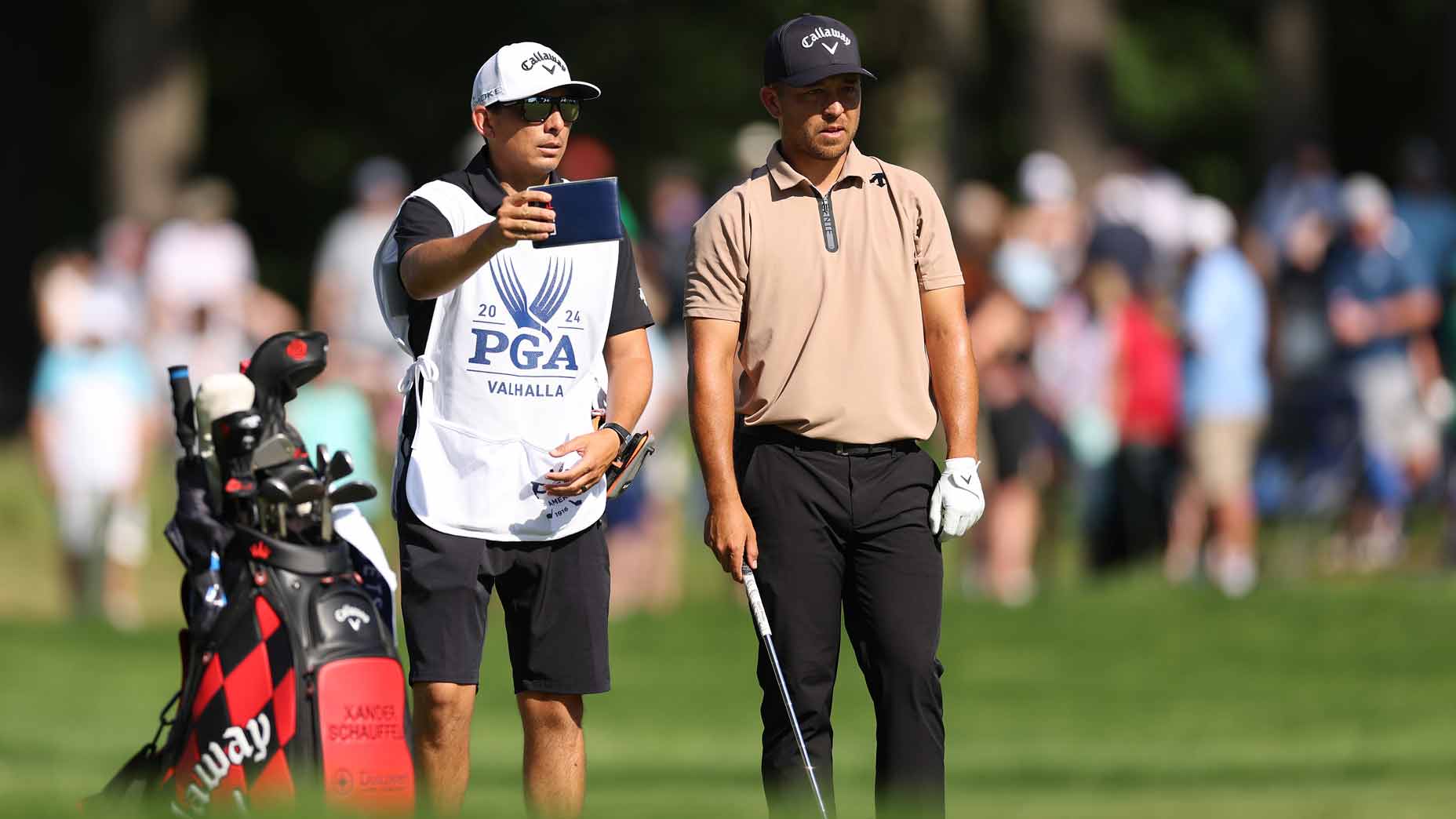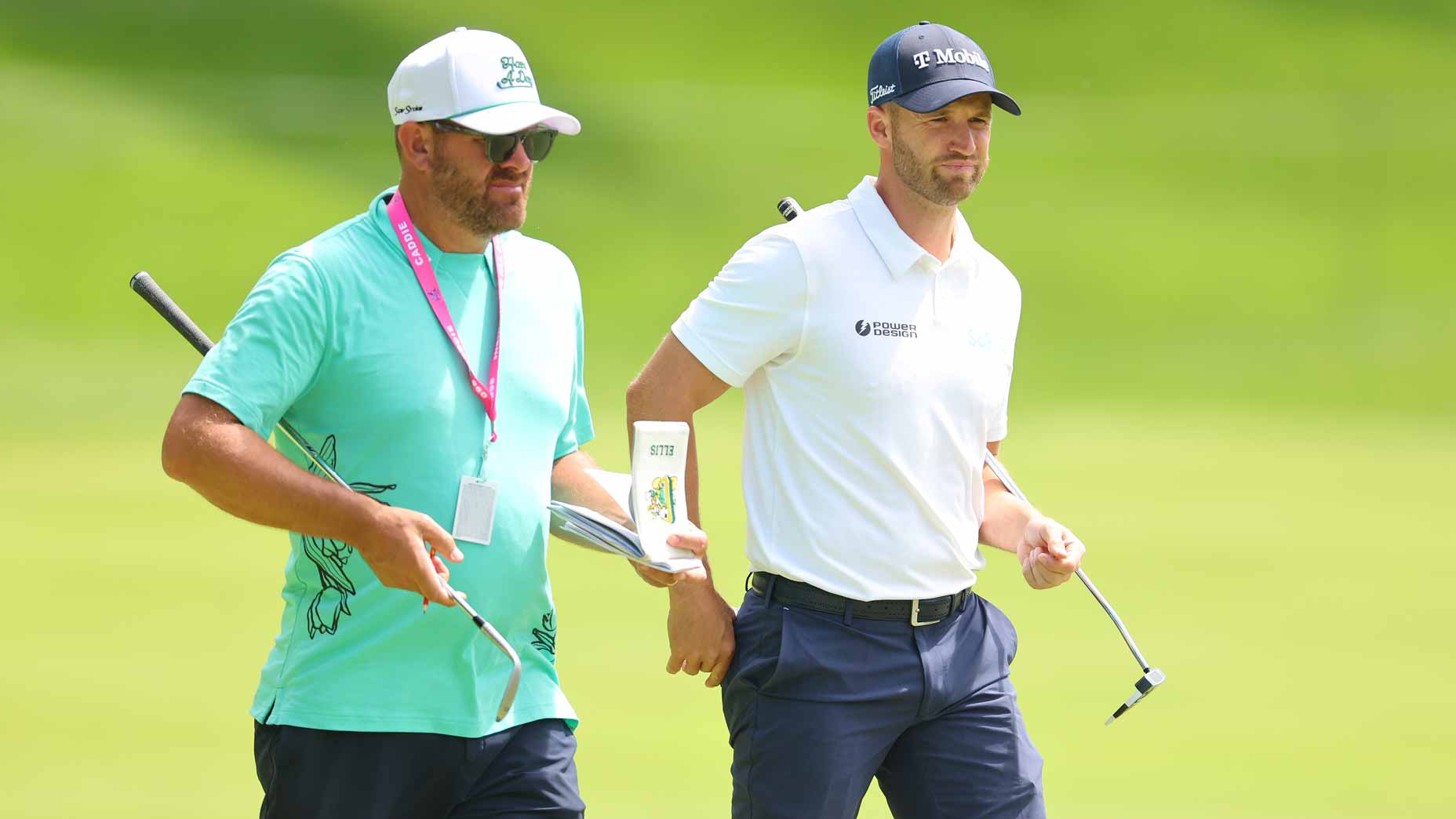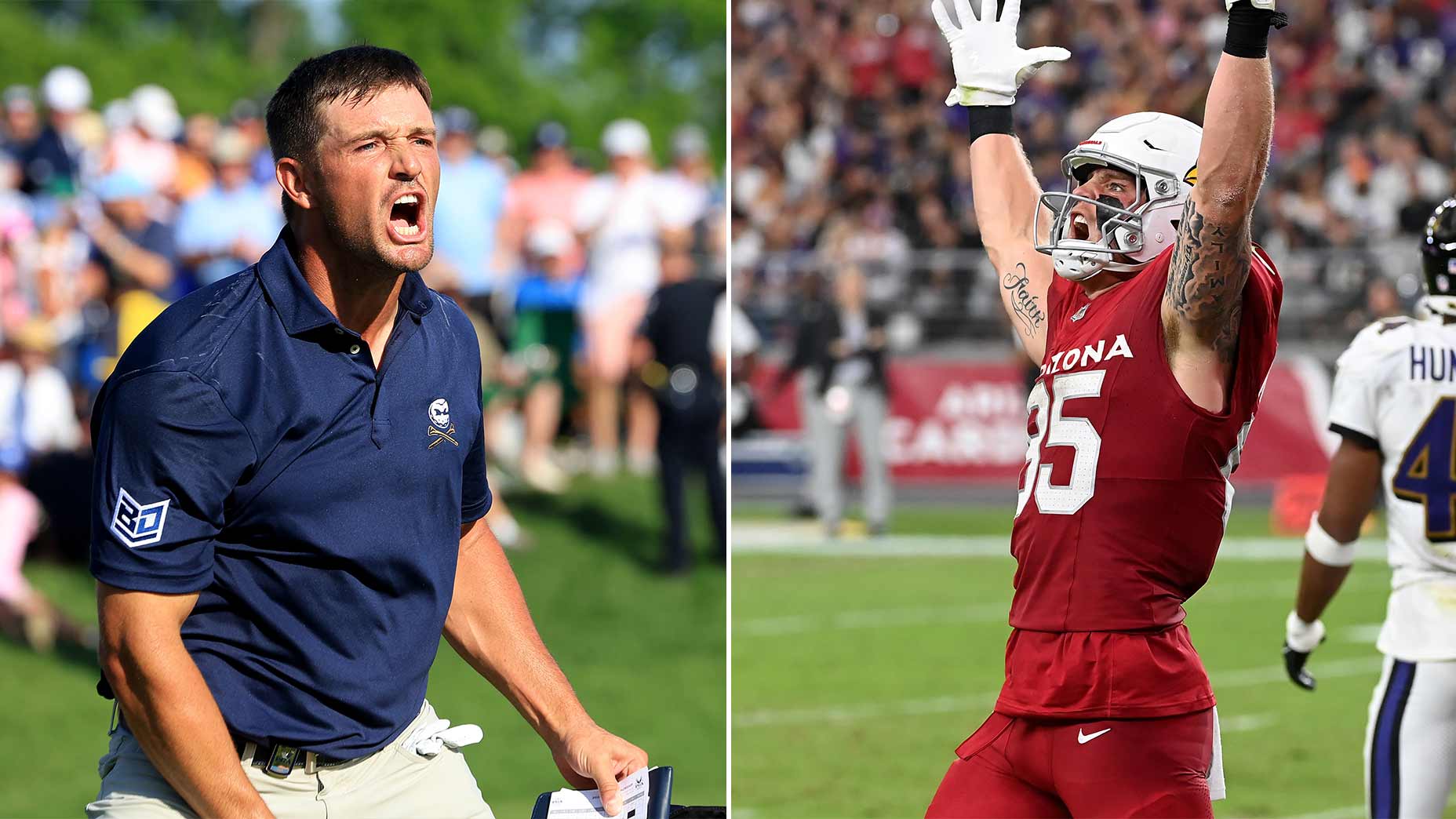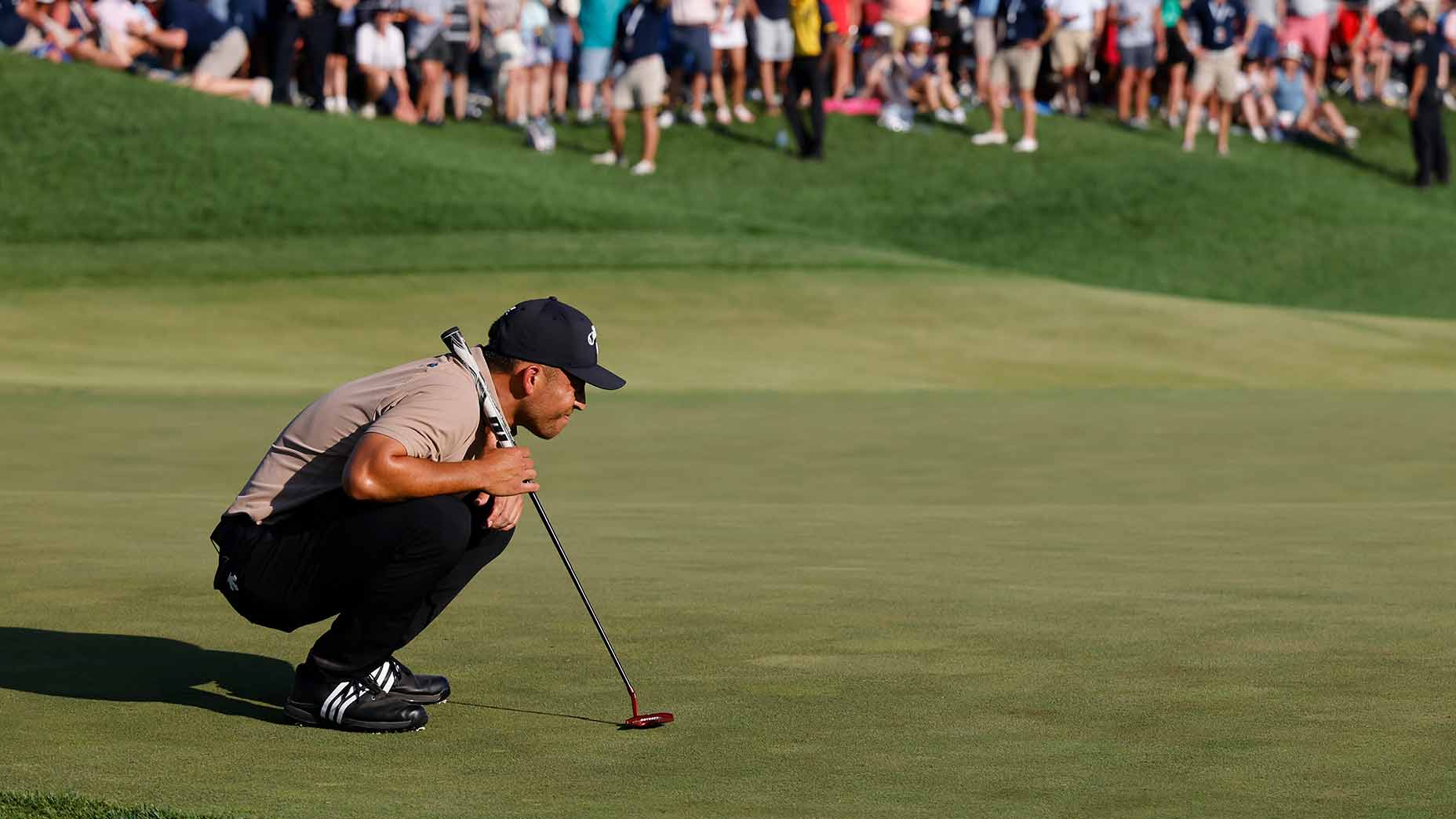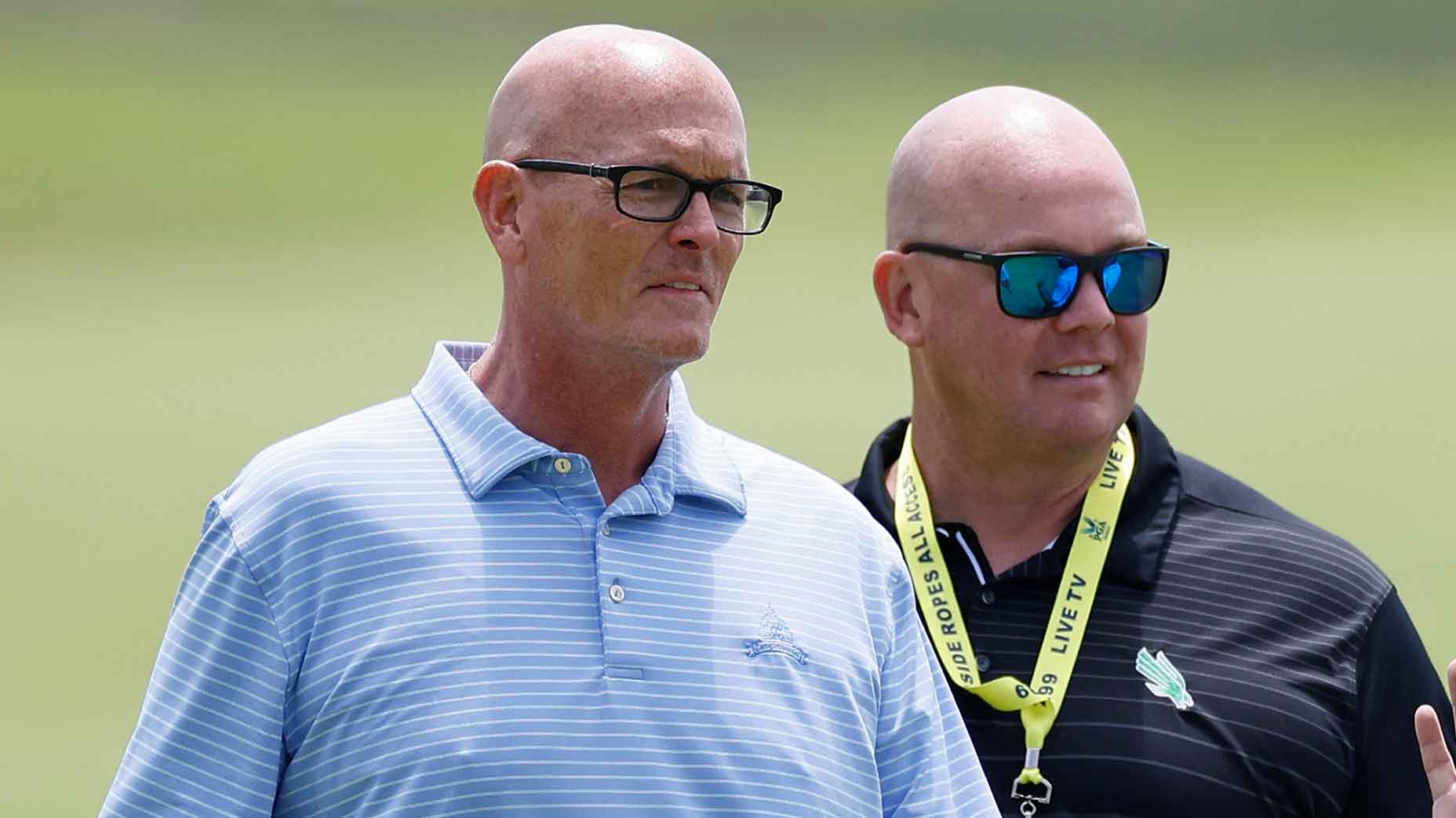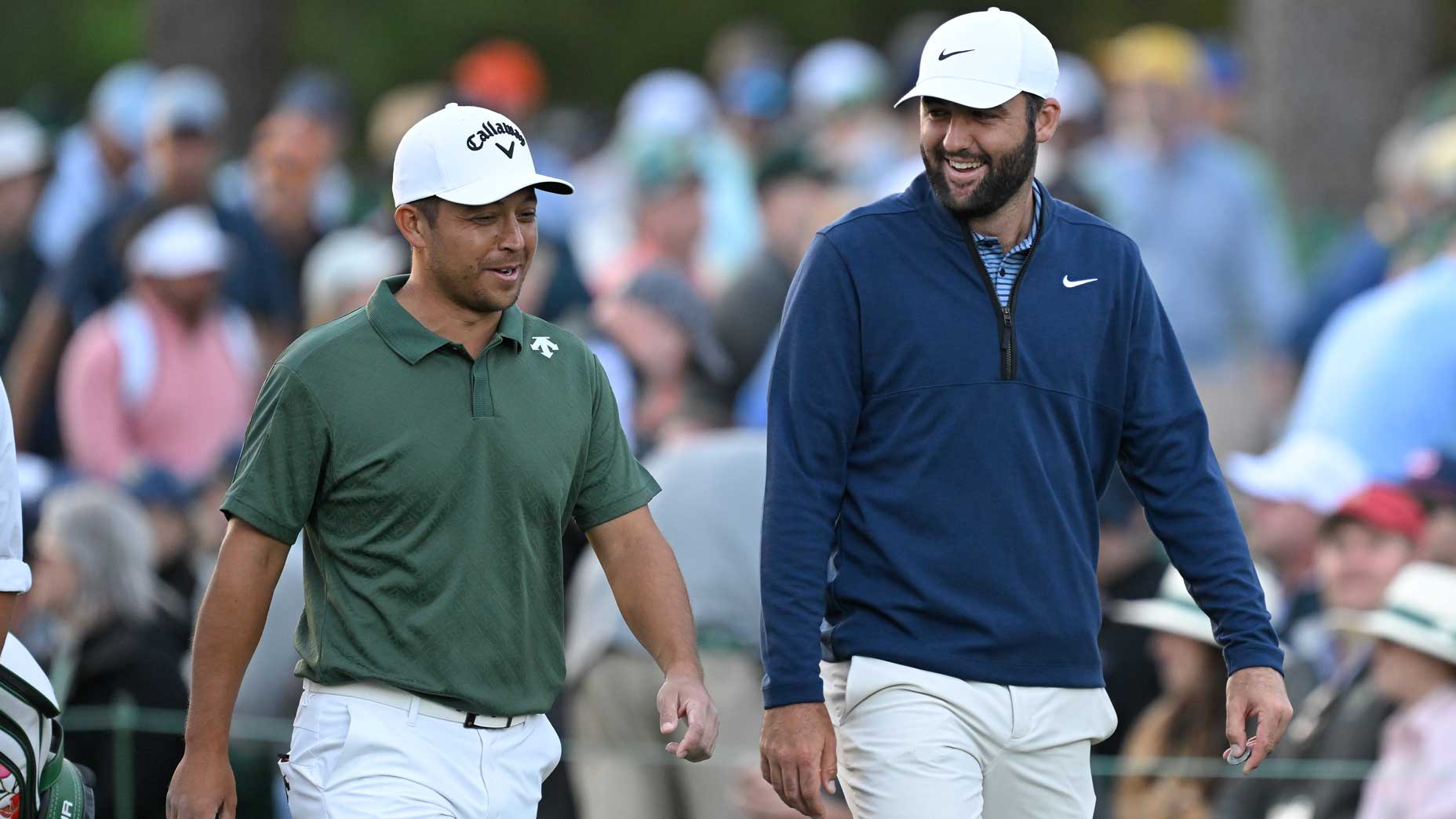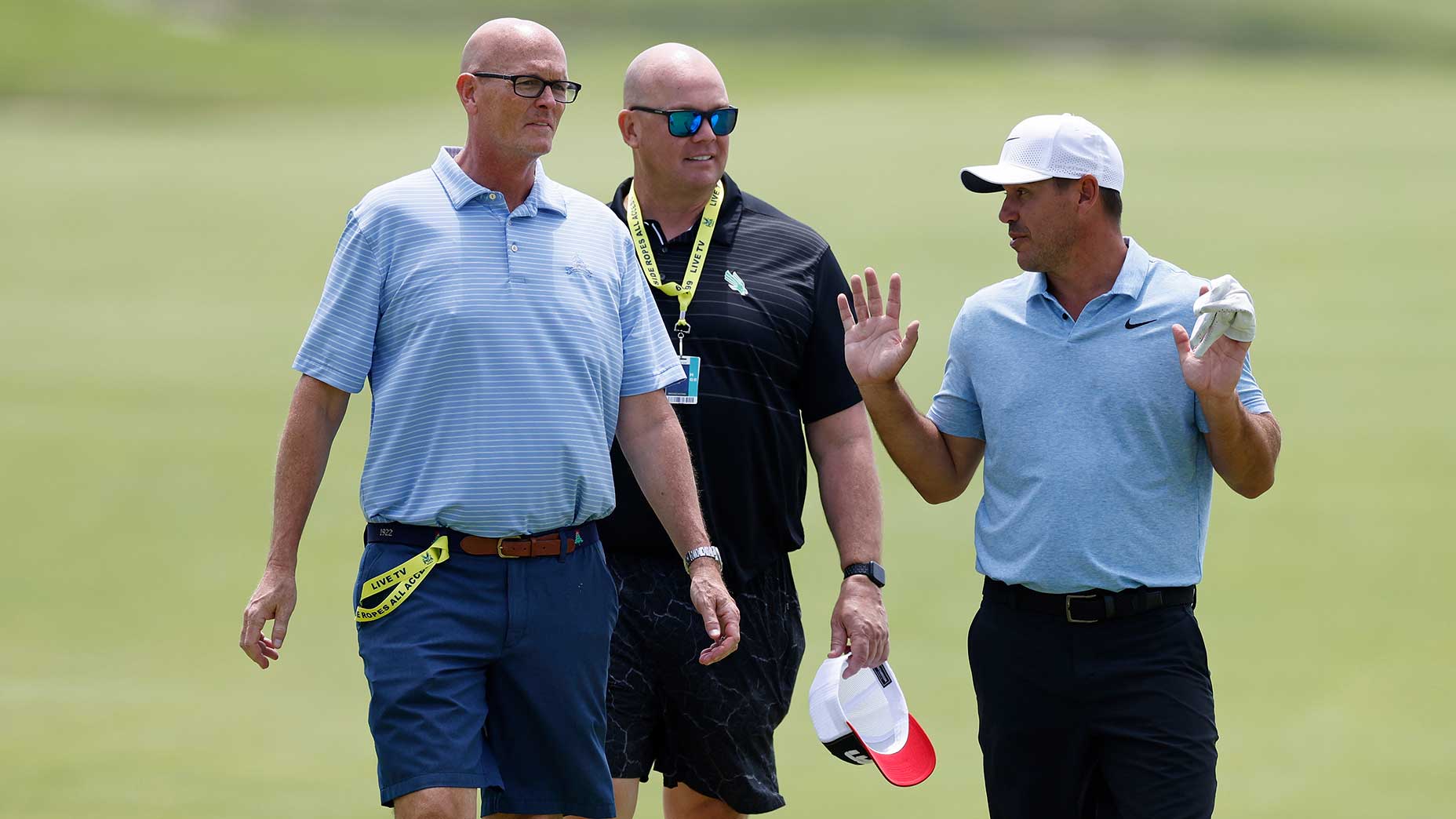What’s the difference between a good caddie and a great caddie? 2 pros explain

Will Zalatoris has been the beneficiary of Joel Stock's insight in more ways than one.
Getty Images
Depending on your worldview, caddying is either a science or an art form.
To those who have never done it, carrying a golf bag can be distilled into a simple blend of math and brute force. It can be taught to anyone, learned by anyone, and executed at a high level by those with even the most rudimentary knowledge of golf. Show up, keep up and shut up. Learn the greens and the yardages along the way, and before long you’ll be at a level rivaling even the most gifted pros.
But caddies know the work is much more than mental math and trapezius muscle strength. No, they’ll tell you, caddying is psychosomatic and deeply intuitive. Being a good caddie involves getting the absolute most out of your player at all times, and getting the most out of your player involves understanding much more than green slope and fairway cant. It involves understanding their competitive makeup and psychological strengths, their strengths and weaknesses (both real and perceived), and how all those things can be manipulated to deliver the lowest possible score.
But don’t take my word for it, take it from Joel Stock and John Limanti, caddies to both Will Zalatoris and Keith Mitchell, respectively, who joined GOLF’s Subpar podcast to discuss all things live on the bag. Stock and Limanti both have lengthy resumes in the PGA Tour caddying world (Limanti’s LinkedIn profile defends this point), and during their conversation with hosts Colt Knost and Drew Stoltz, they broke down the qualities they say separate caddies who are capable of yardages and 5-mile walks from caddies who are capable of lifting their players to PGA Tour success.
“You caddie like you’re not afraid to lose your job,” Limanti said. “Meaning, you’re gonna tell them exactly how you’re feeling, and never just kind of agree.”
As Limanti says, honesty sounds like a simple piece of the caddying world, but it looks very different in actuality.
“They could try and talk you into something,” said Limanti. “So you have to really stand your ground, and caddie like you’re not afraid to lose your job. You might say something that might make ’em upset, but it’s the right information, and so sometimes you have to be really straight forward. I feel like just being very honest with yourself in the situation, that’s huge.”
Stock agreed with Limanti’s read, but also shared another piece of advice.
“I would say be prepared,” Stock said. “Know the golf course. I don’t care how many times you’ve been there, walk it. See what kinda shape it’s in. See if there’s anything new.”
There’s no substitute for preparation, which is also why former caddies like John Wood and Jim ‘Bones’ Mackay have become such valuable assets to the preparation-obsessed world of golf television. In fact, there are a few interdisciplinary overlaps, Stock says.
“Like Johnny said, tell the truth. I’m not gonna be right every time, but you want me to do the best job I’m gonna do,” Stock said. “It doesn’t mean I’m right, but I’m gonna tell the truth.”
To hear the rest of the caddie pair’s interview with GOLF’s Subpar, check out the link here.


